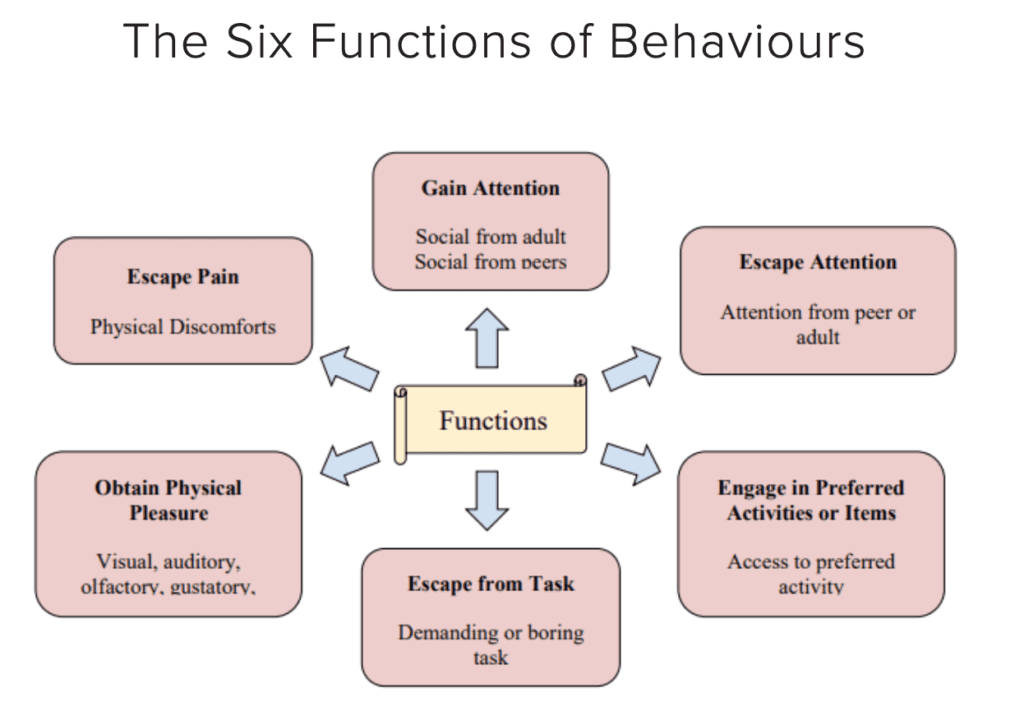What is Positive Behaviour Management?
Behaviour management is about guiding your child’s behaviour so that they behave appropriately.
One effective way to do so is by implementing positive behaviour management. This means giving attention to their positive behaviours (e.g. through praises and rewards) instead of punishing or scolding them for negative behaviours.
Below are some steps you can take to manage your child’s behaviour in a more positive and effective way. We will discuss the reasons for your child’s behaviours and provide some strategies you can use to target these behaviours.
Step 1 – Figuring Out the Purpose of the Behaviour
There are reasons for all behaviours.
Existing research suggests that inappropriate behaviours, regardless of whether performed by an adult or child, serve one or more of the six functions illustrated below.
Often, when your child cannot tell you the reason for their behaviours, it is easy to misunderstand their intentions and blame them for being ‘naughty’.
This may cause both of you to become frustrated, which may accumulate over time to create tension in your parent-child relationship.

To identify the purpose of your child’s behaviour, start by considering: ‘what does my child gain from doing this behaviour?’
Hint: Pay close attention to what happens before and after the behaviour occurs.

To give you a better idea of how you can implement the strategies with your child, here are some possible case scenarios:

Scenario 1: A 7-year-old child who keeps screaming
Step 1: Purpose → Escape Pain
Step 2: Reason → To escape physical discomfort from a toothache
Step 3: Strategy → Design visuals (drawings, cards, photographs) for the child to communicate that she is in pain

Scenario 2: A 15-year-old student who keeps hitting students
Step 1: Purpose → Escape from a task
Step 2: Reason → Lacks sufficient ability to perform the task
Step 3: Strategy → Make the task easier for student and gradually increase the difficulty
If you feel like you need professional help, do reach out for professional help, or alternatively reach out to Annabelle Psychology and book an appointment with us.
Article provided by Annabelle Psychology (Source)



